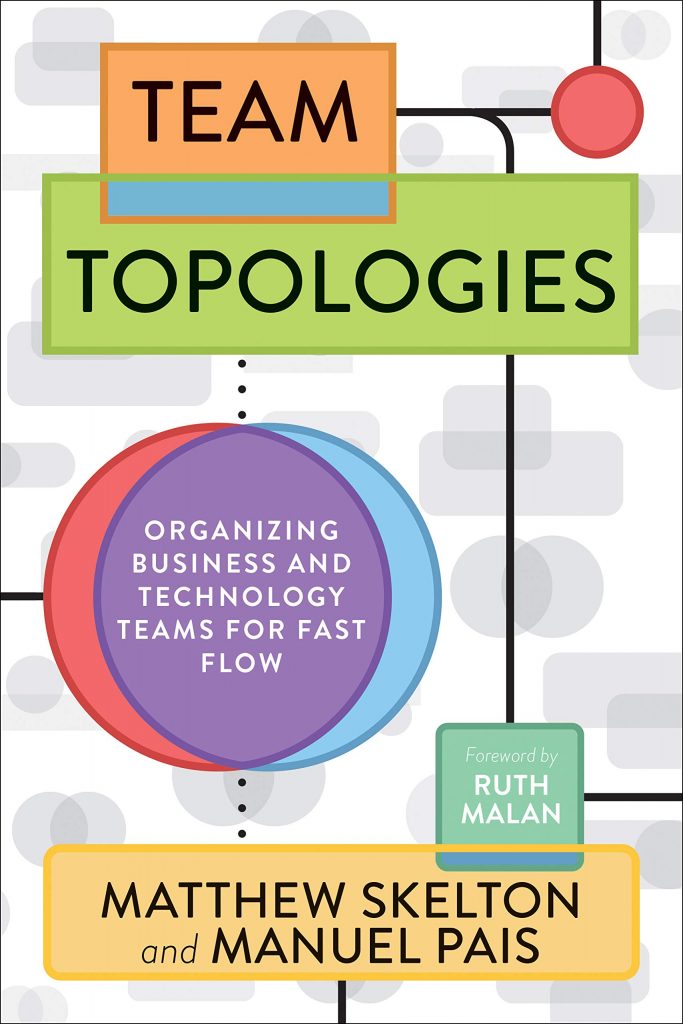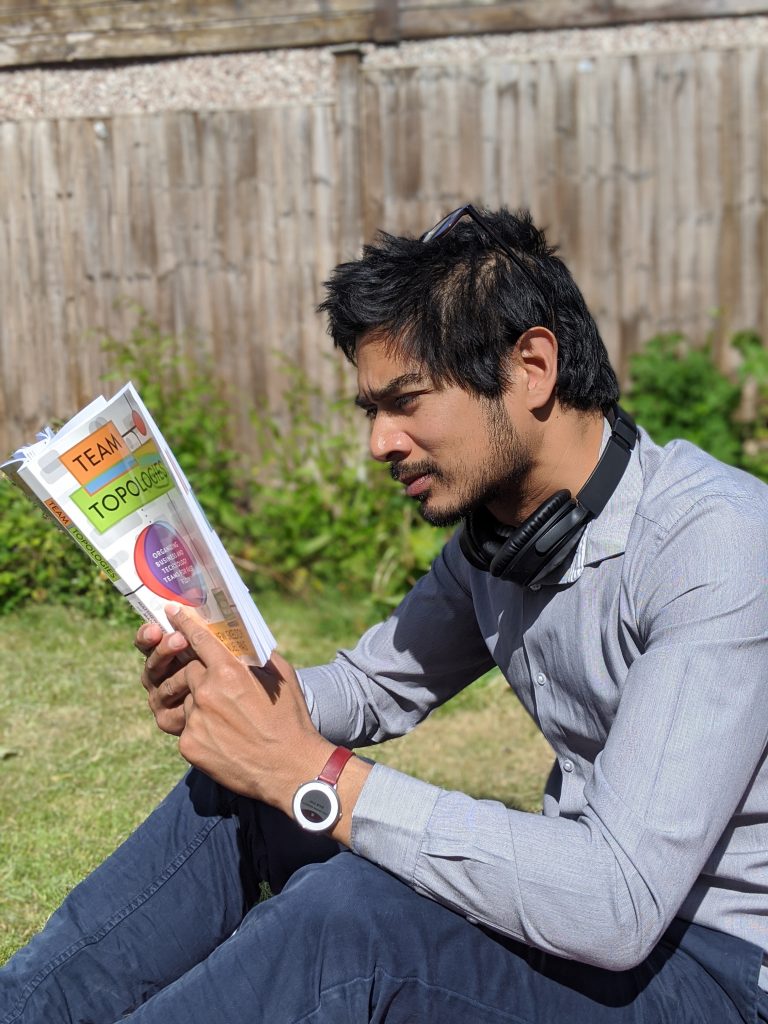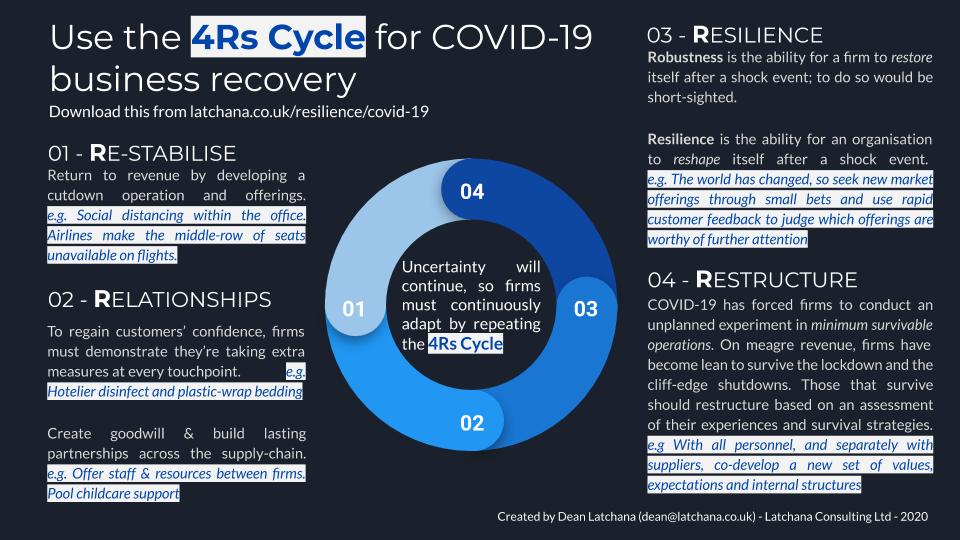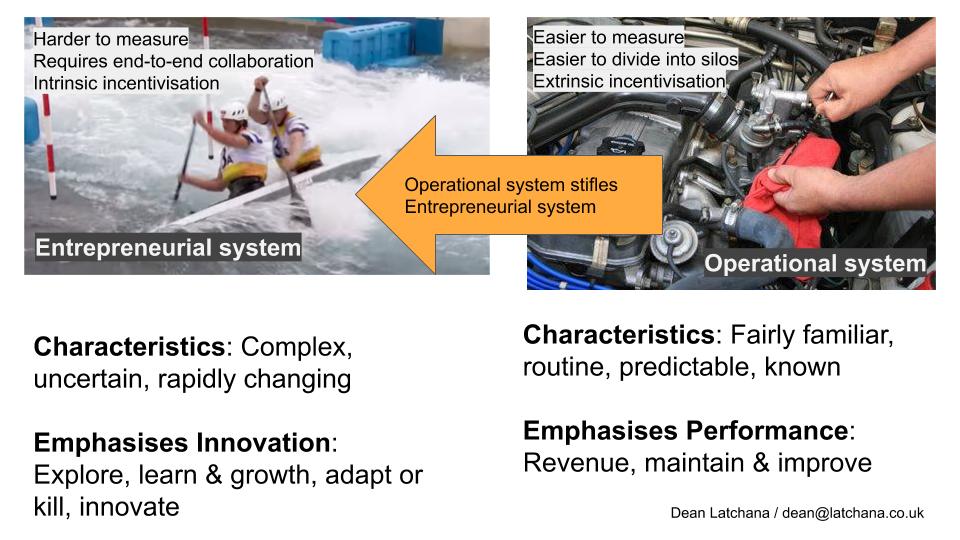
I include myself amongst those who have longed for a way to better articulate how firms can enable more outcome-focused teams.
So it’s been rewarding to have Team Topologies help me order my thinking to enable organisations to better support customer-facing teams. Such thinking will help those teams better serve their customers and deliver their organisation’s mission.
What Team Topologies says

We need to design our organisation around team-first principles. Chiefly we should design around teams’ cognitive load. Cognitive load meaning the mental effort being used at any one time.
Invariably the products & services an organisation creates is determined by its structure and its internal communication lines. This follows Conway’s Law. In a consultative manner, we should work with the law by altering team dynamics, structure and communication lines to create the desired products and services.
We should work with Conway’s Law by altering team dynamics, structure and communication lines to create the desired products and services.
Team Topologies offers a sophisticated mechanism to examine, design and improve team and organisation design.

This is achieved through close attention to team topologies (i.e. types of team), team responsibilities and collaboration modes. Ultimately this is to orientate the organisation to support teams to deliver a continuous flow of value.
There are four team types. Two of which are stream-aligned teams (i.e customer-facing teams) and Platform teams whose raison d’être is to support stream-aligned teams with reusable services with minimal friction.
My Take-Aways
Counter-intuitively, where appropriate, we need to reduce collaboration. For example, a platform team needs to provide an easy-to-consume service for customer-facing teams; this shouldn’t necessitate in-depth collaboration. This will allow the customer-facing team to focus more on their customer mission.
To help organisations realise their mission, Team Topologies helps standardise the ingredients for team and organisation design. Metaphorically speaking, these ingredients are not for a standard meal plan, but more for a test kitchen. A test kitchen where organisations can continuously discover how customer-facing teams should be supported by other team types and the leadership team.
Metaphorically speaking, the ingredients described in Team Topologies are not for a standard meal plan, but more for a test kitchen. A test kitchen where organisations can continuously discover how to support customer-facing teams.
Dean Latchana
Closing thoughts
Team Topologies will help foster the right mindset and means to help organisations re-orientate to support customer-facing teams become more outcome-focused, better serve customers and deliver the organisation’s mission.
It’s given me the language, ingredients and confidence to better articulate my own experiences to help my clients achieve success.
Kudos to Matthew Skelton and Manuel Pais (Team Topologies) for authoring Team Topologies.



